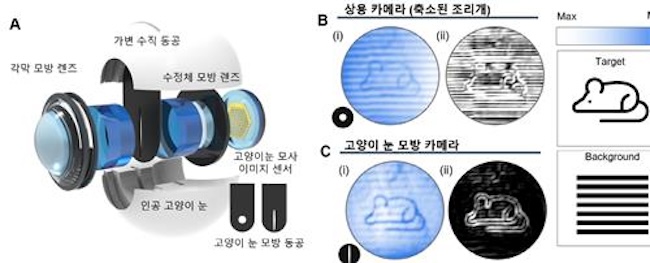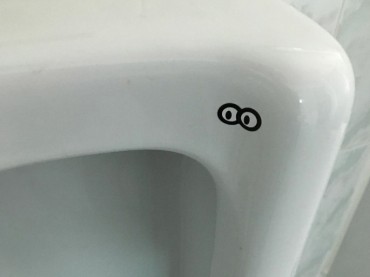
A camera design inspired by the feline eye (Image courtesy of the Gwangju Institute of Science and Technology)
GWANGJU, Sept. 24 (Korea Bizwire) – Researchers from the Gwangju Institute of Science and Technology (GIST) and Seoul National University have unveiled a groundbreaking camera design inspired by the feline eye, potentially revolutionizing low-light imaging technology.
The team, led by Song Young-min from GIST’s School of Electrical Engineering and Computer Science and Kim Dae-hyeong from Seoul National University’s School of Chemical and Biological Engineering, announced their findings on September 23.
At the heart of their innovation is the replication of the tapetum lucidum, a reflective layer found in the eyes of cats and other nocturnal animals. This biomimetic approach has resulted in a camera capable of capturing high-sensitivity images in dim environments.
The researchers employed a vertical variable aperture to effectively block intense light, preventing overexposure of the photodiode. For low-light conditions, they designed a circular pupil and silver reflector that mimic the cat’s eye structure, improving light absorption efficiency by 52%.
Through optical simulations and experiments, the team verified the system’s high-sensitivity target image processing performance and camouflage-breaking capabilities across various lighting conditions.
They also theoretically demonstrated that their vertical pupil system could more effectively distinguish between background and target objects compared to small circular pupil systems.
“By emulating the vertical pupil and tapetum structure of a cat’s eye, we’ve developed a high-sensitivity artificial visual system,” Song explained.
He added, “This hardware-based approach improves object recognition capabilities across diverse lighting environments without the need for software post-processing, making it potentially applicable in fields such as autonomous vehicles, drones, and surveillance robots.”
The research was supported by various national scientific institutions, including the National Research Foundation of Korea’s Mid-career Researcher Program, the Sejong Science Fellowship, and the Institute for Basic Science (IBS).
The groundbreaking study was featured as the cover article in the prestigious journal “Science Advances,” published online on September 18.
Kevin Lee (kevinlee@koreabizwire.com)






